Healing

Some of the boys involved in carrying out those acts in December we know, and we know their parents. The parents we do know are not frothing-at-the-mouth bigots. We can’t imagine their sons learned racist ideas at home.
But they learned them somewhere.
Racists and bullies aren’t born. They are made.

I saw ailing patients. I saw the neighborhoods surrounding Hartford Hospital, which belie the city’s reputation as the home of pin-striped actuaries bored with their BMWs. Connecticut’s capital is, in fact, one of the nation’s poorest communities, its many marginalized Hispanic and African American neighborhoods barely seen by the BMW drivers. The cerebral palsy victims trapped in their bodies; MS patients; old women fumbling for change on the bus while hooked up to portable oxygen; old men wheezing with emphysema. So many people we barely see — and I was one of them.
I took solace in knowing that Jesus makes a bee-line for my new world.
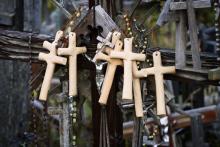
Living “in between the times” — especially now, mid-Advent and before Jan. 20, 2017 — we have the responsibility to name the present for what it is and the opportunity to describe the future as it can be, should be, is already a little bit today, and one day will be in full.
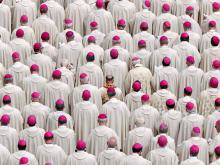
The Vatican has launched a website as part of its efforts to protect children from clerical sexual abuse and promote healing and reconciliation.
It’s the first time that the Vatican has published resources and documents on the issue, and the site is sponsored by the commission set up by Pope Francis to protect minors.

While I mourn how this election threatens to erode the progress that’s been made over the last eight years, I am reminded this is not our whole story as a nation nor as citizens of the kin-dom of God. There is a better story yet to be written.
Storytelling is at the heart of all movements. If we have ears to hear and eyes to see, stories can inspire us to listen deeply and to compassionately respond to the voices and lived experiences of those on the margins of society.

When we center healing, we remember that our struggles for social justice are not just about opposing things we do not like, but building the world we would actually like to live in. So many people do not join the hard work of organizing because they see only what they might lose and not what they would gain in world without oppression. That’s why the process is as important as our goal of social justice. Instead of waiting for the infinitely deferred “revolution,” we can start living the revolution now so people can have a taste of what a better world can be.
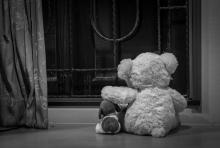
Rather than something that must be hidden, brokenness becomes a uniting essence. As different as we are, woundedness becomes the very catalyst for transformation, allowing the ladders of hierarchy and walls of division to naturally begin to decay into the common ground of suffering — a suffering that can, and will be, the very site of new life.

The vast majority of Americans have prayed for the healing of others and more than 1 in 4 have practiced the laying on of hands, a Baylor University expert reports. “Outside of belief in God, there may be no more ubiquitous religious expression in the U.S. than use of healing prayer,” said Jeff Levin of the university’s Institute for Studies of Religion in an announcement of his findings.

One of the most common criticisms of faith I have heard is this: if there is an all-powerful and loving God somewhere out there, why does this God allow horrible things to happen? In a world where there has always been war, sexual violence, starvation and murder, where is this omnipotent God? Why does he allow these things to happen? Where is she when people suffer injustice?
The Bible gives us plenty of examples of the abuses of the faithful, sometimes even at God's own hand (like in the book of Job). We read of the systemic oppression of the Jewish people and the early Christian church. Through this, God's people were always able to remain steadfast in their faith. Forming a defense of faith in God in the face of realized evil is known as theodicy.
So: In a nation where Blacks have been enslaved, lynched, and raped because of their race, and in time where people must declare that “black lives matter,” how do black Americans form their own theodicy to justify this violence, abuse, and systemic oppression?
And is it necessary to do so?
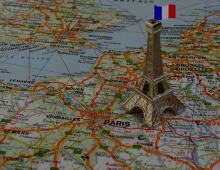
Just like you, I was horrified when I learned of the terror attacks in Paris on Nov. 13. The scale, precision, and barbarity of these crimes are hard to fathom.
My first reaction was sadness for the victims and a desire for peace. My second was a sense of mild panic. If they can do this in Paris, they can certainly do it in my city!
My third reaction, one I’m not particularly proud of: I thought about how much I’d like to see the people responsible for these acts hunted down and destroyed.
I’ve been thinking a lot about 9/11 lately. I remember the way that we as a nation went through a similar three-step process. We went from shock and sympathy to fear and paranoia, and finally to the conviction that we must annihilate those who attacked us.
It all happened so quickly.
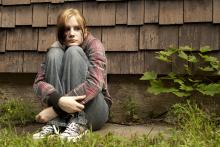
Our initial vision included a basic goal of raising awareness and seeking to coordinate efforts for a unified response that would comprehensively address this form of modern-day slavery through prevention, awareness, action, and aftercare. But as our awareness efforts soon led many trafficking survivors to us, statistics and stories were replaced with personal, local faces that would need our help and in turn, would change our lives.
Interacting with trafficking survivors is a cross-cultural experience. Many of their stories are riddled with addiction, abuse, neglect, out-of-home placement, loss, rejection, and suffering. (And this does not even begin to address the culture of the commercial sex industry.) The language of “the life,” the rules of “the game”, and the many nuances of a relationship with a trafficker — whether known as daddy, boyfriend, boss, abuser, or lover — are only a few of the cultural differences for a woman coming out of the commercial sex industry.
As I sit with a woman who has secrets, stories, and experiences that are much different than my own, what can I offer? The world views her as dirty and as choosing this lifestyle. Others view her as to be pitied and a cause to be rescued. What does she need? What do we need to understand about women who have a history of prostitution or sex trafficking?
Recently I asked another woman this question. Separated from her trafficker for only two months, she had a fresh understanding.
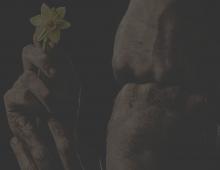
The organization Journey of Hope: From Violence to Healing — co-founded in the early 1990s by Jaeger and fellow activist Bill Pelke — has toured 40 states nationwide and 16 countries overseas. Speakers include a woman whose father was stabbed to death in front of her and a man whose brother was executed by a Utah firing squad.
The overarching goal of the U.S. movement is to end the death penalty. For some advocates, the mission ends there.
"They don't want to have the murderer over for Sunday dinner," as one advocate puts it. Not every story involves forgiveness.
But many do. In Tulsa, Okla., Edith Shoals, 67, is a victims' advocate for the Oklahoma Department of Corrections and, on the side, organizes support groups for women whose children were murdered. In 1992, Shoals' daughter Lordette, an 18-year-old college student, called Shoals from a pay phone and was murdered in mid-conversation, shot in the back by a carjacker.
"Grieving's not a big enough word for what happens," says Shoals.
"But if you don't forgive, it eats you up from the inside out."

Secular and religious therapists will all say the same thing — in times of suffering, people want to be heard when they cry out. We don’t have to worry about saying the right things or solving their problems. In fact, imposing our words and answers upon them often just gets in the way of their healing.
But the corollary to being heard is to talk — to talk about our emotions and our pain. This is where our culture has problems. We’re taught to not be a “burden” on others. Few of us want to admit to ourselves or to others that we have pain and that we are vulnerable. We’d much rather handle it ourselves, put on a tough exterior, and bury our pain deep within.
But that doesn’t lead to healing. Rather, it leads to more harm, as our bottled up emotions explode during times of stress. Controlling our emotions by bottling them up never works in the long term. When we us that method, we soon discover that we don’t control our emotions — our emotions control us.
The Shema calls us into a different way of life. It invites us to listen to the pain within ourselves and within our neighbors. In doing so, we find healing. And we find very presence of God.
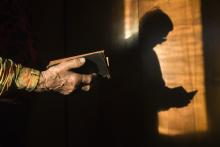
For me, the question of what to do with Yoder is not only an academic issue but a personal one. I was Yoder’s graduate assistant — and would be his next-to-last — for two years. Academically, how I teach my “War and Peace in the Christian Tradition” course is indebted in great extent to what I learned from him. As evident in numerous footnotes, my scholarship and publications, including for Sojourners, over the last two decades on just war and just policing also owe a lot to both his research and his mentoring.
Nevertheless, after this semester, I am leaning towards Blanton’s recommendation of setting Yoder’s work aside, at least for the foreseeable future. I think it is now possible to rely on the work of others for persuasive defenses of nonviolence and for strong critiques of Niebuhrian realism. I struggled over whether to use one of his books or essays in my course this semester. I hesitated to say anything about Yoder’s misconduct to my students. It took me a while before I did so.
What to do with Yoder? I’m not sure.

Some social and trauma theorists believe these issues are directly symptomatic of an undiffused, collective trauma around the event of 9/11 — exacerbated by our post-modern, technocratic society, in which our witness of one another is often relegated by social media personas and devices. The environment is controlled, protected, guarded — a false sense of security that instead perpetuates isolation and disconnection. This raises a question as to where, and whether, we are experiencing integrated and authentic community as we heal.
It is widely acknowledged that supportive and caring community is an absolutely necessity in trauma repair. To be sure, the answer is complex and dynamic. But perhaps on this day of remembrance, rather than re-enacting our dissociative narratives, we can attempt to reimagine and embrace courageously an authentic witness — to continue the work towards a restorative, integrative, and peaceful future.

AN IRAQ WAR VETERAN passes the offering plate after listening to a sermon on Christian persecution in the early church—tales of torture and execution. A 19-year-old student—home for the summer from college, where her first experience at a fraternity party turned violent—listens to her childhood pastor recite the story of David and Bathsheba and David’s subsequent path to redemption. A mother placates her two children with Cheerios and raisins as she struggles through the exhortations to spousal submission, hiding bruised arms under long sleeves in the middle of July.
The Christian story is littered with trauma—from slavery (the Israelites in Egypt) to sexual assault and abuse (Dinah, Tamar, Bathsheba) to the trauma of war (see: much of the Old Testament) to, of course, the crucifixion of Jesus and martyrdom of his disciples.
There is possibly no better resource for understanding the implications of and need for healing from trauma than faith communities pointing to the cross and Jesus’ answer to violence. Both the need and the opportunity are great. But perhaps too often Christians proclaim the message of Easter—victory and restoration—while skipping past the violence and trauma of Good Friday. Some theologies explain away that violence as a necessary component of ultimate salvation—but let’s get to the salvation part, okay?—leaving survivors of trauma who fill our Sunday pews without a touchstone for healing within the very communities that purport to be safe spaces.

"Would you give an addict a clean needle, so they could stay alive until they found freedom from their addiction? Would you give a prostituted woman condoms, so she could protect herself until she found freedom from prostitution?"
Clearly, the famous evangelical leader I was speaking with in Cambodia didn't think we should be helping people in this way. He was adamant that Jesus would never give out condoms or clean needles. He insisted that the little clinic we were running in a Phnom Penh brothel was a waste of time and inconsistent with the gospel.
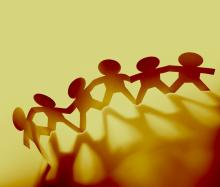
I did not celebrate Independence Day this past weekend.
The truth is the United States has never been an independent nation. Built on stolen land by stolen labor, sacrificing Natives and Africans and their descendants to the mythology of “manifest destiny,” greed, oppression, and white supremacy, this has never been a nation of liberty and justice for all.
The ignoble myth of white supremacy that permeates the foundation of this country and underlies the policies and institutions that form the context of our lives has been rearing its ugly head so much lately that it cannot be as easily ignored or denied as it has been in the past. The recent massacre in Charleston and the burning of African-American churches add even more reasons to the hundreds of thousands to awaken to the reality of racism that undermines best ideals of this nation. Our country has failed to atone for, or even critically examine, its history of racial oppression.
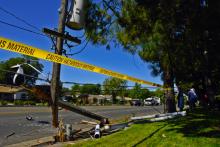
I didn’t realize the promise I vowed to myself — to never to live out of step with my values, to always live with passion and bring life into the world — would be a tall order; an impossibly high standard that could turn into, “I need to do and experience everything as quickly as possible so that I don’t waste time.”
Over the past 10 years, this experience developed an impulse to “hurry up” and “do more.” I overextended myself in too many activities the next few years, developed an anxiety and depression disorder, and shamed myself for living in this anxious state when I “should” be living it joyfully to the full.
Through therapy and medication, I got much better, but was still lusting after experiencing everything. Time never seems to be on your side when you’re living like you might die tomorrow. Life never seems long enough when you act like it will stop at the same minute as your heart, forgetting about all I’ve been taught about life after death.
THE GOSPELS OF Mark and Matthew both include the story of a Gentile woman who begs a reluctant Jesus to heal her daughter (Mark 7:24-30 and Matthew 15:21-28).
I thought of these texts last fall while reading I Know Why the Caged Bird Sings, an autobiographical work of the acclaimed poet Maya Angelou, who died last year. Born in 1928, Angelou spent most of her childhood with her grandmother in small-town Stamps, Ark. After a few years of eating candy from her grandmother’s grocery store, Maya developed two cavities that, she writes, “were rotten to the gums.” However, the white dentist in Stamps did not take “Negro” patients, and the closest black dentist was 25 miles away.
For several days no aspirin touched the blinding pain, so her grandmother finally took her to the white dentist, determined to beg and plead for help. Her grandmother recounts the dentist’s final rejection in highly colorful language: “Said he’d rather put his hand in a dog’s mouth. … He said, ‘Annie, I done tole you, I ain’t gonna mess around in no niggah’s mouth.’”
We may recoil at such naked racism, but in the segregated Jim Crow South, this sentiment must have been typical. I can imagine white churchgoers reacting to this story by thinking, “The nerve of that woman begging help from a white dentist! She got what she deserved.”